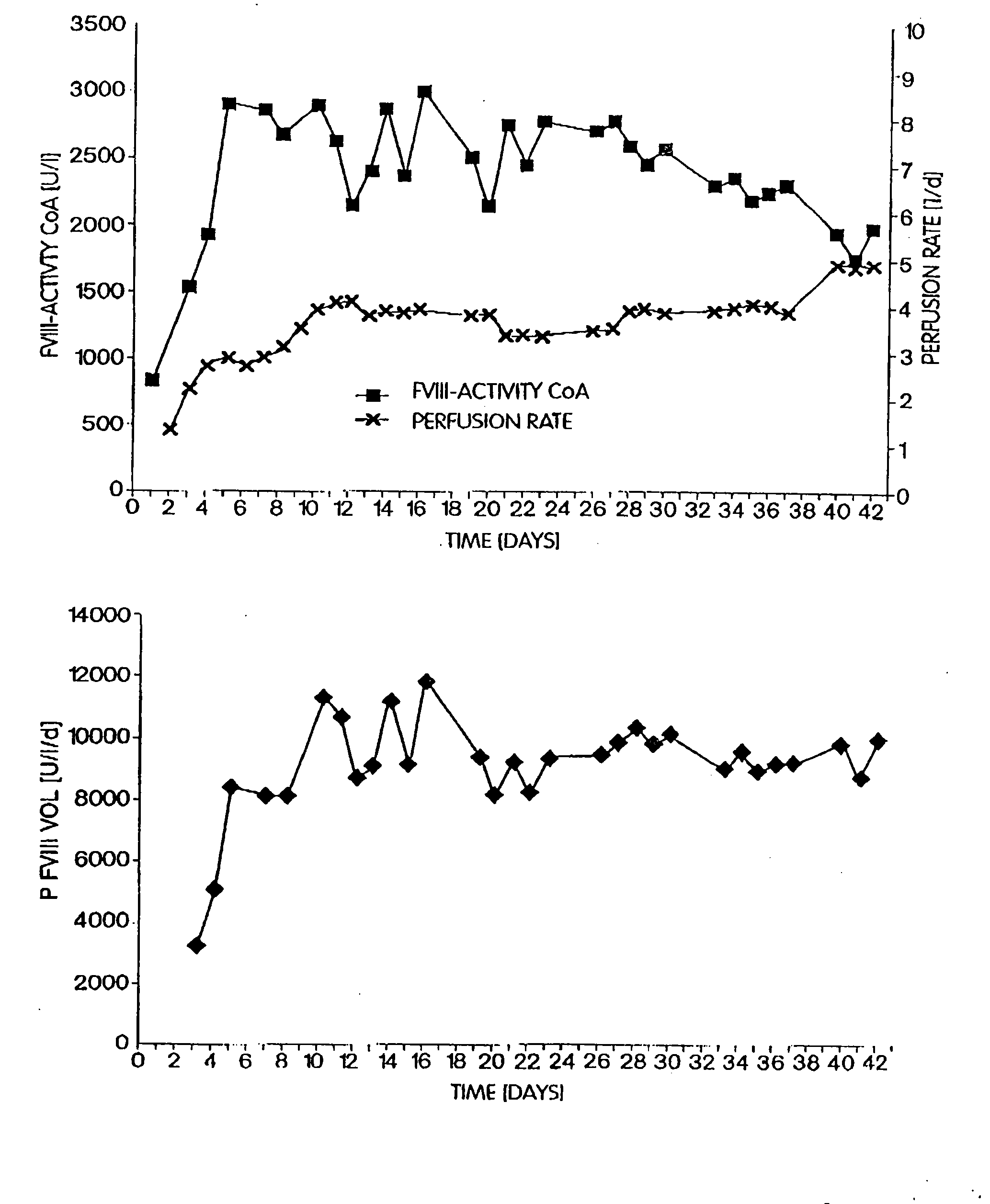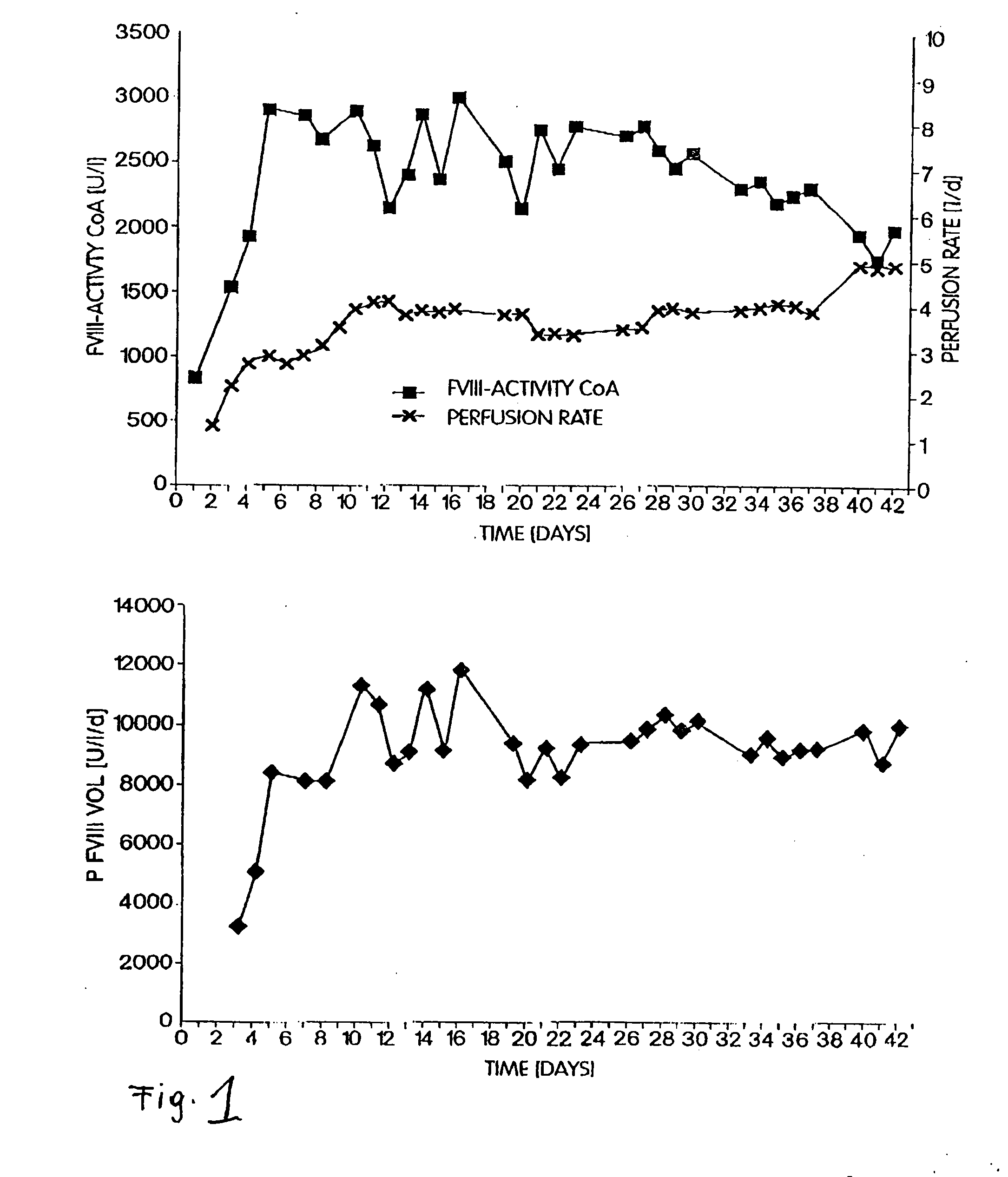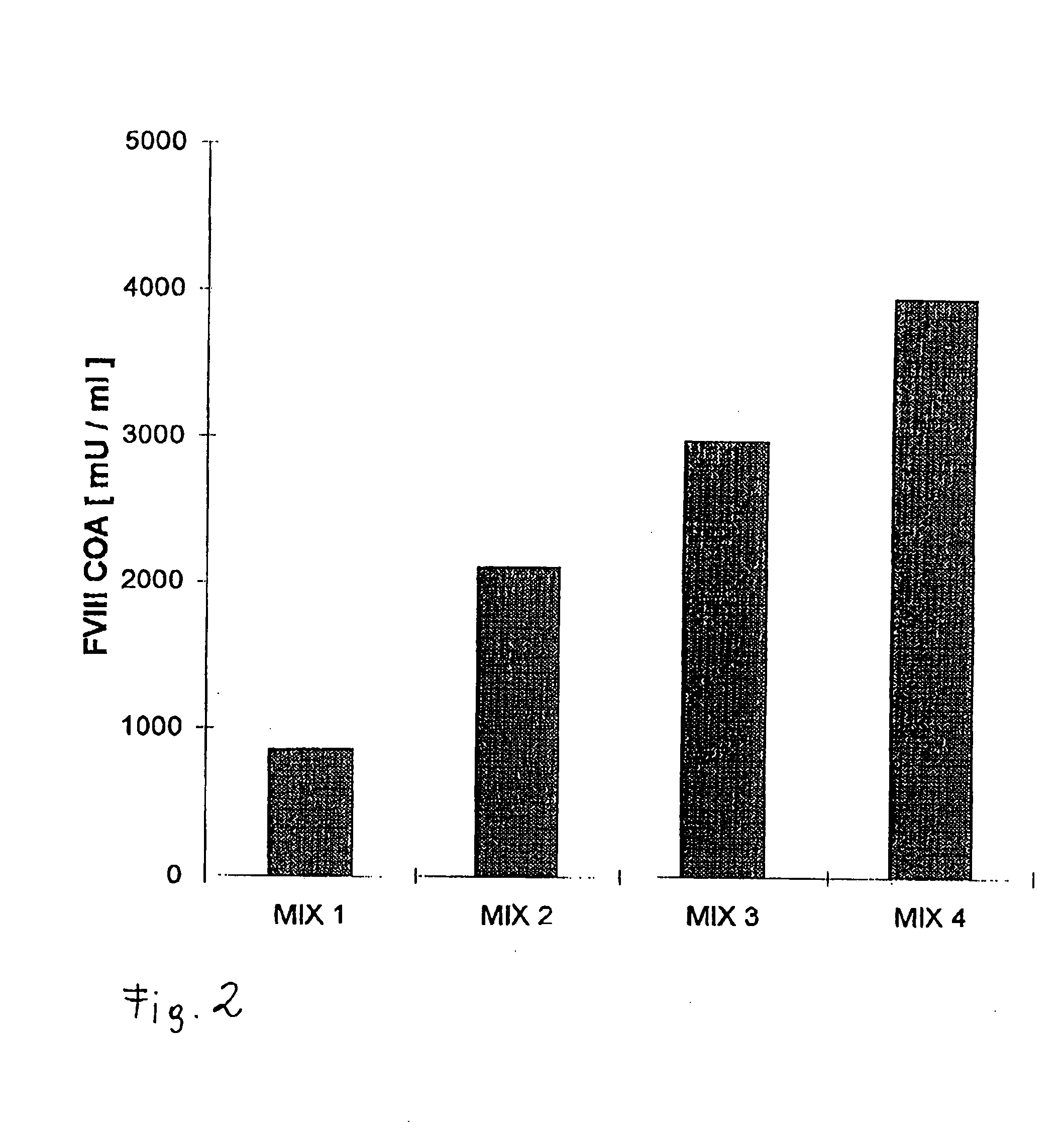Medium for the protein-free and serum-free cultivation of cells
a technology cell culture, which is applied in the field of cell culture, can solve the problems of high cost, high labor intensity, and inconvenient use of serum material, and achieve the effect of improving the possibility of protein-free and serum-free cultivation
- Summary
- Abstract
- Description
- Claims
- Application Information
AI Technical Summary
Benefits of technology
Problems solved by technology
Method used
Image
Examples
example 1
Stability of rvWF-CHO Cells After Switching From a Serum-Containing Medium to a Serum-Free and Protein-Free Medium
[0064]CHO-dhfr cells were plasmid phAct-rvWF and pSV-dhfr co-transfected, and vWF-expressing clones were subcloned as described by Fischer et al. (1994, FEBS Letters 351:345-348). A working cell bank (WCB) was started from the subclones, which expressed rvWF in a stable manner, under serum-containing conditions but in the absence of MTX, and the cells were immobilized on a porous microcarrier (Cytopore®) under serum-containing conditions. Switching the cells to a serum-free and protein-free medium took place after a cell density of 2×107 cells / mL of the matrix had been reached. The cells were cultured further for several generations under serum-free and protein-free conditions. The cells were tested in a serum-free and protein-free medium at various points in time by means of immunofluorescence with labelled anti-vWF antibodies. The evaluation of the stability of the cel...
example 2
Cloning of Stable Recombinant CHO Clones
[0065]A dilution series was prepared from the cell culture containing rvWF-CHO cells in accordance with Example 1 (this stable cell clone that was designated r-vWF-CHO F7 was filed, in accordance with the Budapest convention, with the ECACC (European Collection of Cell Cultures), Salisbury, Wiltshire SP4 OJG, UK, on Jan. 22, 1998, and acquired the deposition number 98012206) which had been cultured for 60 generations in a serum-free and protein-free medium and 0.1 cells were seeded out in each well of a microtiter plate. The cells were cultivated for approximately 3 weeks in DMEM / HAM's F12 without serum additions or protein additions and without selection pressure, and the cells were tested via immunofluorescence with labelled anti-vWF antibodies. A cell clone, which had been identified as positive, was used as the starting clone for the preparation of a seed cell bank. A master cell bank (MCB) was started from the seed cell bank in a serum-fr...
example 3
Cell Specific Productivity of the Recombinant Cell Clones
[0066]A defined number of cells was removed at defined stages during the cultivation of the recombinant cells, and these were incubated for 24 h with fresh medium. The rvWF: Risto-CoF-activity was determined in the supernatant liquors of the cell cultures. Table 1 shows that, in the case of the stable recombinant cell clones in accordance with the invention, the cell-specific productivity was stable even after 60 generations in a serum-free and protein-free medium and it had even increased in comparison to the original clone that had been cultivated in a serum-containing medium.
TABLE 1Cell specificCell specificCell specificproductivityproductivityproductivityof theafter 10after 60working cellsgenerationsgenerationsin mUin mUin mUrvWF / 106rvWF / 106rvWF / 106Cell Clonecells / daycells / daycells / dayrvWF-CHO5530#808.68original cellcloner-vWF-CHO626560F7*)stable clone*)filed on Jan. 22, 1998 (ECACC (European Collection of Cell Cultures, S...
PUM
| Property | Measurement | Unit |
|---|---|---|
| molecular weight | aaaaa | aaaaa |
| molecular weight | aaaaa | aaaaa |
| molecular weight | aaaaa | aaaaa |
Abstract
Description
Claims
Application Information
 Login to View More
Login to View More - R&D
- Intellectual Property
- Life Sciences
- Materials
- Tech Scout
- Unparalleled Data Quality
- Higher Quality Content
- 60% Fewer Hallucinations
Browse by: Latest US Patents, China's latest patents, Technical Efficacy Thesaurus, Application Domain, Technology Topic, Popular Technical Reports.
© 2025 PatSnap. All rights reserved.Legal|Privacy policy|Modern Slavery Act Transparency Statement|Sitemap|About US| Contact US: help@patsnap.com



